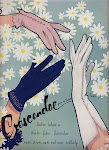 |
| My Traditional Turkey |
I have written before about food and cooking in several Suburban Familiar blogs. I have included the general attitude toward cooking in my childhood home where Peg Bracken’s “I Hate to Cookbook” had a place of honor. Our vegetables and crescent rolls came from a can. My mother baked something called Hot Tuna Cups, which was absolutely disgusting, in spite of spawning an excellent rock band just a few years later. We occasionally had those horrific TV dinners -- sparking sibling battles because no one wanted the Salisbury Steak version, even after they added the coveted Apple Brown Betty desert. Friday nights we had Chinese food or pizza delivered but in her defense, my mother did squeeze fresh orange juice for all of us every morning, believing it possessed amazing restorative powers.
In spite of such inauspicious beginnings, I love to cook and I am a terrific cook but I wasn’t always one. (I still feel I need to apologize to my brother and his friend Steve for almost poisoning them in the early 70s with an inedible meal from my first Wok.) But I practiced over the years and my evening audience is usually thrilled with the results. My repertoire now encompasses a gluten-free twist on favorites, no small accomplishment in my humble opinion.
 |
| Looking for something to do with all that leftover Halloween candy? |
There is, at least in my household, no holiday, which revolves around food more than Thanksgiving. I make a great turkey but I am always open to getting tips and ideas from others. So it is in this spirit that I present the following Thanksgiving recipes, carefully transcribed from a festive bulletin board I happened upon, outside a second grade classroom. Only the names of these 8 year olds have been changed to protect the innocent.
On the making of Turkey:
First, shoot a turkey. Next burn off the feathers and take out all the insides. After that put it in the oven for 6 hours at high. Last, take it out of the oven and eat it. Enjoy! --Andy
First, buy a Turkey at Whole Foods. Put it in the oven for 7 hours at 60°F. Then let it dry for 3 hours. Finally, get it out of the oven and enjoy it. --Julie
First, buy a Turkey at Kings. Then, cook it for 2 hours at 250°. After that check to see if it’s the right temperature. Take the turkey out of the oven. Last, eat the turkey. --Eva
First, you get your Turkey. Then you put it in the oven for 6 hours. Next, you shoot some seasoning into the Turkey. Then you eat it. --Mack
 |
| Another Traditional Interpretation |
Are the side dishes your thing?
Cranberry/Raspberry/Strawberry Sauce
First get jelly and cranberry juice and mix it together. Next put a teaspoon of sugar and add cranberries, strawberries and raspberries and mix it together. Then, put it in the refrigerator for 5 minutes. Then, enjoy! --Brie
Sweet Potatoes and Marshmallows
First, get sweet potatoes. Then cook it in the oven for 4 hours at 120° F. Last, put marshmallows on it and enjoy! --Jack
Mashed Potatoes
First, get some potatoes at the supermarket. Next, take the potatoes and cut them into little cubes. Then add milk and mash! --Leif
So no matter how much cooking you do or don’t do this Thanksgiving, remember writing clear directions for your recipes is an important part of the celebration.
And to all of you, dear readers, a very Happy Thanksgiving!
























